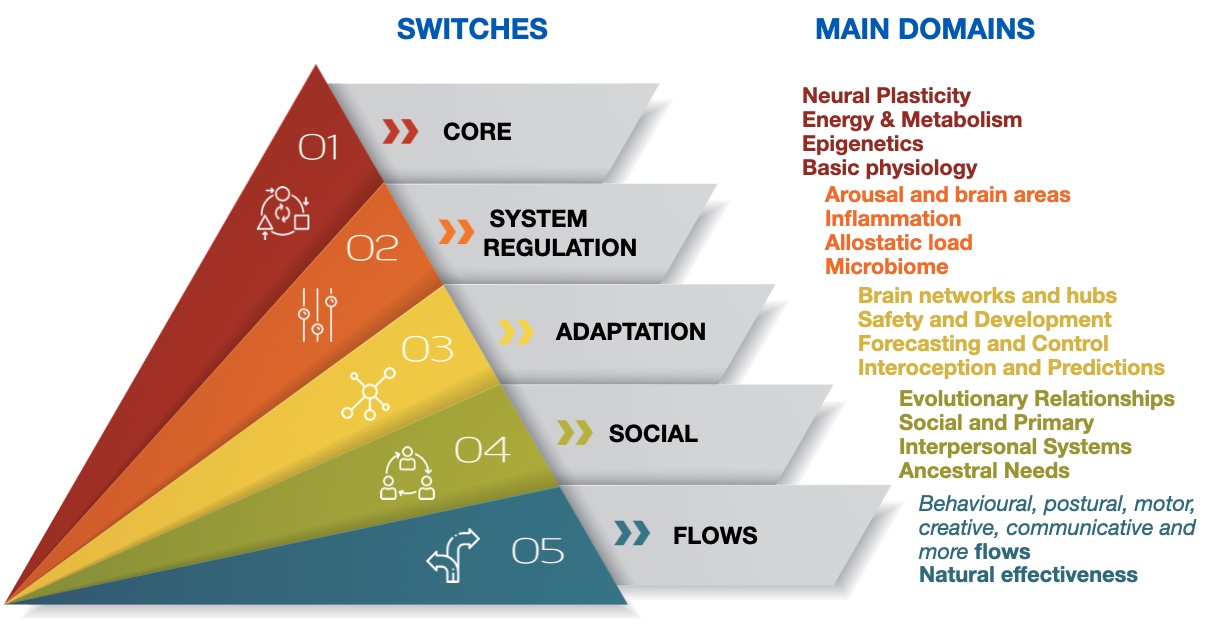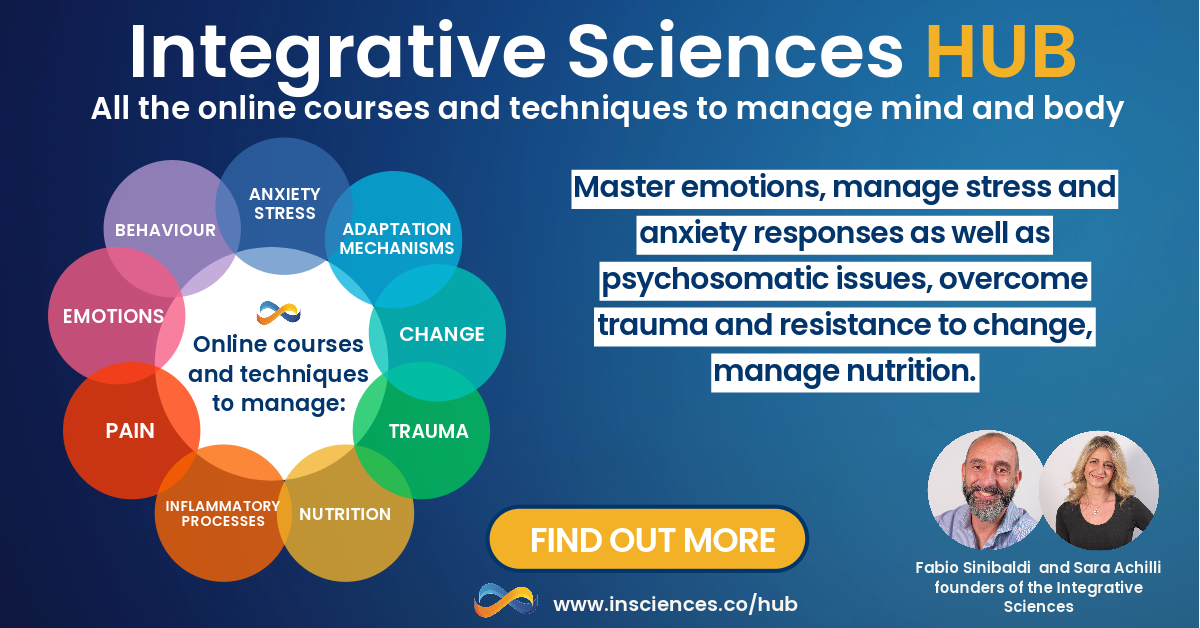
"Depressed" patient and "low energy": 8 different levels to act on
Mar 23, 2023
INTRODUCTION
When we have to assess a patient, how many levels of analysis do we have at our disposal?
Each of us certainly has one or more patterns deriving from our training courses and our usual professional practice.
Yet there are so many other factors to explore:
- there are those that independently, have created or otherwise maintain or amplify the symptom;
- there are others that act on the same mechanisms we are used to working on, but at another level.
Let's look at a practical case study to get to the heart of the topic below!
We get a patient who defines themselves as "depressed" and "with little energy".
A fairly common reading is: "it’s normal for a depressed person to have or feel little energy" and, consequently, it is expected that by intervening on their depression their energy levels will also improve.
In other cases, the solution is to provide "energizing" food supplements or mood enhancing drugs...
but what more can you do?
By implementing an integrative approach, we access many levels of reading and numerous ways of behaving.
In this analysis I will not dwell on the different types of psychological or psychotherapeutic interventions that are fundamental and already well-known to professionals.
Here, I would like to highlight the lesser-known, but nonetheless very useful aspects on which it is possible to make assessments and possibly intervene.
Let's look at some examples below.
WHAT WE WILL SEE AND HOW TO READ WHAT FOLLOWS
We will look at many different levels, and by the way I have only selected a few!
Let's start from the more biological (sleep, circadian rhythms, nutrition, activity, epigenetics, etc.) and less known mechanisms to get to the more sophisticated and personal ones (brain networks that manage security and uncertainty; the connection between the sense of powerlessness, social regulation and bodily resources; the links between posture, thoughts and sense of mastery, etc.).
I also want to clarify that it is an introductory presentation, there are many aspects that deserve pages and pages of in-depth study. We also separate these themes to be able to describe them easily, but they are all connected and influence each other, and it is possible to act on these connections themselves.

To address all these issues, we will follow the Switch scheme, which was invented to be a map to help us analyze all the possible factors involved in a specific issue.
 Switch 1A – What and how we eat, mental and physical correlations
Switch 1A – What and how we eat, mental and physical correlations
There are foods, diets and habits (such as the times at which we eat) that can provide more or less energy to the body and brain. These energies are to be considered both in terms of resources that the body can use to do and think, and in terms of neurotransmitters that support motivational processes.
In the homeostatic and allostatic processes of the body-mind unit, the availability of these energies represents a factor of physiology and development potential. Taking care of these aspects through an embodied approach, therefore, creates the conditions that are diametrically opposed to the biological conditions of depression. This represents an excellent foundation on which to work on a more emotional and mental level. An interesting aspect is that very often it is enough to provide some basic knowledge and general indications to significantly help the patient change these mechanisms. In more complex cases, excellent synergies can be created with doctors or nutritionists specialized in this area, mutually increasing the quality and effectiveness of the respective interventions.
 Switch 1B – Physical activity for change
Switch 1B – Physical activity for change
For some time now, in various disciplines, the importance of physical activity has been highlighted with respect to lack of energy and depression. The lesser known aspect concerns the specific type of activity and its relative effectiveness. In fact, depressed people are often told to start walking every day for at least 20 minutes to reactivate the body, cellular respiration and other fundamental processes required to gain and perceive more energy. Few people know that the alternation, even very short, between effort and rest (for example 20 seconds of squats and 40 seconds of rest, which are sustainable by almost anyone), enables the rapid change of epigenetic marking (and, therefore, creates plasticity for change) and enables the perception of feelings of power in large muscle groups (such as the legs and back) which are fundamental in the perception of bodily resources at the basis of networks that manage safety, self-regulation and interpersonal power.
 Switch 2 – When the immune system tells the brain to “act sick”
Switch 2 – When the immune system tells the brain to “act sick”
When a person has been in a severe inflammatory state for an extended period of time (which can occur after physical and emotional trauma, due to chronic stress, lifestyle, medication, and other fairly common conditions) the T cells of the immune system send a signal to the prefrontal cortices (and not only) to "act sick", so as not to waste physical resources on complex tasks (such as learning or being concentrated) or on activities that are not essential for survival (such as socializing or making plans for the future).
Research has abundantly shown that by reducing inflammation, T cells stop giving this signal and energies are redistributed to all higher functions, giving way to a behavior that is "no longer typically depressed".
These processes can also be explained by the professional and a series of practical suggestions can be given (regarding habits, sleep-wake rhythms, circadian rhythms, nutrition, physical activities, social activities, pain management exercises, etc.) to help significantly reduce inflammation levels. In cases where it is deemed necessary, medical support can be provided for a check-up or for targeted interventions.
 Switch 3A – Working in a targeted way on sensory elements and thoughts via the networks that regulate them
Switch 3A – Working in a targeted way on sensory elements and thoughts via the networks that regulate them
From a structural point of view, mental and emotional functions rely on specific brain networks, i.e. groups of brain areas that interact with each other and with other systems (perceptive, peripheral nervous, immune, etc.).
The switch between Default Mode, Salience and Executive Network in people with depressed symptoms can be disabled due to repeated experiences of ineffectiveness. These three networks have unique characteristics and can be reactivated by leveraging them (for example sensory stimuli for Salience and ways of thinking for the Default Mode Network).
 Switch 3B - Body maps, ideals and flexible action plans to manage uncertainty
Switch 3B - Body maps, ideals and flexible action plans to manage uncertainty
In cases of depression and lack of energy, the functioning of the Uncertainty Network is also often altered. This Network allows us, among other things, to manage the unexpected by referring to the different images we have of ourselves. In this case, working on body maps, on ideal goals and on the flexibility of one's plans it is possible to recover a sense of mastery and reactivate motivation and the sensation of available energies typically inhibited or deactivated in cases of depression.
 Switch 4A – Sadness/depression as a failure of anger
Switch 4A – Sadness/depression as a failure of anger
From an ethological point of view, anger (or rather "aggression") is useful for defending something important and, if one fails in this task, it can turn into sadness and a state of helplessness. It is a complex mechanism that I have described in a very concise way, I would not want to trivialize it in this quick presentation. In this context, it is important for us to focus on one aspect, namely that depression and the sense of little energy available can also come from this type of process.
 Switch 4B – The psychosomatic cost of a frustrated need
Switch 4B – The psychosomatic cost of a frustrated need
Another aspect similar to the previous one, because it always derives from an ethological and neurobiological reading together, concerns the prolonged inability to satisfy Ancestral Needs, which are those that man has in common with all evolved mammals. Ancestral needs are a model that was born, unlike others, by reverse engineering: studying which needs had been deprived or managed incorrectly in different pathologies or dysfunctions. Not satisfying them for a long time or in an unbalanced way leads to activating various somatization processes, including those associated with depression.
 Switch 5 – Integrating body-mind and releasing unnecessary activations
Switch 5 – Integrating body-mind and releasing unnecessary activations
A different interpretation, because it overturns the more classic perspectives, consists in considering that in reality the energies exist, but they are constantly wasted and - therefore -they are longer available to achieve the desired objectives.
From the principle of minimum free energy to embodied cognition, as well as various other fields of study of mind-body relationships in a modern and scientific perspective, it is now well demonstrated that - from obsessive thoughts to maintaining protective postures - there are many ways in which the our body maintains defensive activities that are no longer effective and no longer necessary.
The interesting thing is that one can act at different levels to unlock these mental, postural, movement, linguistic, etc. flows. For example, it is easy to release some tensions which, with words or emotions, can no longer be changed, with simple techniques (including self-massages the patient can be taught), if you know the structure and function of the fascial tissue. Similarly, knowing the directions and rotations of physiological movement it is possible to favour the release of somatic memories in synergy with other techniques and interventions that are being carried out.
Conclusions
We started off with two fairly widespread symptoms (depression and lack of energy) and have seen that, in addition to the more widespread readings, many other insights can be provided.
As an example, following the Switch scheme, we have seen 8 different levels to explore and on which we can intervene in a practical way. By understanding these body-mind mechanisms and thanks to the practical support provided by targeted models and tools, it is possible to expand and extend one's professional range of action, intervening on several fronts in synergy with respect to one's professional and therapeutic goals.
Do you want to find out more?
Discover the many online courses on psychosomatic processes, regulation of anxiety and stress responses, emotion modulation, trauma and resistance to change. They are all part of the Integrative Sciences HUB, our regularly updated online training centre, available to you 24/7 with new COURSES, UPDATES, TECHNIQUES AND PRACTICAL TOOLS each month.
Stay connected with news and updates!
Join our mailing list to receive the latest news and updates from our team.
Don't worry, your information will not be shared.
We hate SPAM. We will never sell your information, for any reason.


